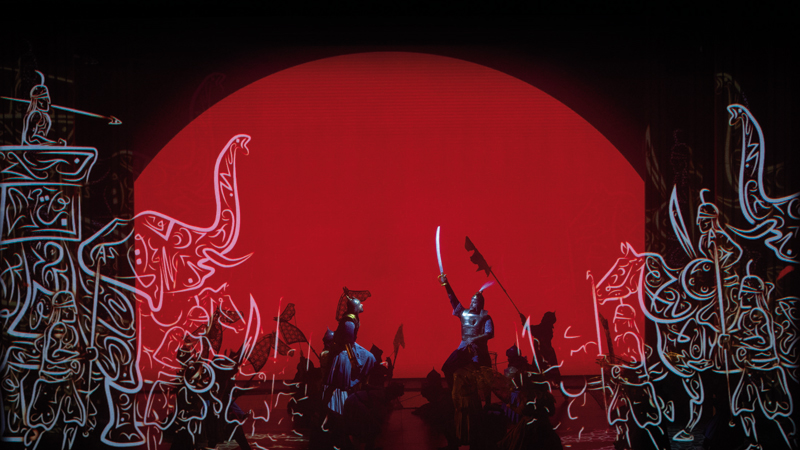


Mughal-e-Azam is based on historical facts during the reign of Emperor Akbar in 16th century India. But rather than being a “ultimate Bollywood... spectacular blockbuster” as misleadingly promoted, the show which came to ROHM at the weekend turned out to be a three-hour epic of Russian proportions. It was a delight to see members of the audience dressed in their colourful evening wear as they filtered into the hall. The sold out, jam packed auditorium at the Royal Opera House Muscat was filled with excited anticipation before curtain up on both evenings, for a nostalgic reinterpretation of the iconic blockbuster.
The stage adaptation seen in Oman came from the 1960 big budget hit movie of the same name by film director, K. Asif, produced by Shapoor Pollonji and based on the 1922 stage play by Urdu dramatist, Imtiaz Ali Taj. The most awe-inspiring elements in this theatrical production were the beautiful, lavish costumes designed by Manish Malhotra and superb scenery by set and opera designer, Neil Patel. The presentation was enhanced with stunning scenic projections by John Narun. The backing soundtrack was recreated by Piyush Kathenojia, adding two more songs, and pre-recorded for the performance without a live orchestra present.
Mughal-e-Azam focuses on the tale of Prince Salim (later Emperor Jahangir who commissioned the Taj Mahal) son of Akbar the Great who reigned from 1556 to 1605. The young Salim grows into an arrogant, selfish boy so his father sends him into the army to mature and reform. On his return Salim falls in love with a court dancer, a slave-girl, Anarkali. Their difference in social rank angers King Akbar beyond reason and engenders the tragedy of the plot.

Pubali Sanyal performed the role of Salim’s long suffering, heartbroken mother, Jodhar, with moving pathos as her thirty-year-old son, played by the handsome Syed Shahab, returned from war a transformed, courageous officer. The celebrations took place under a magical crescent moon in the palace gardens, including an exquisite Kathak chorus with perfectly synchronised whirls of bright red contrasting with the pure white of the Royals. Cleverly moving platforms cleared the stage quickly from inner court drama to exterior dance floor.

Part Two opened with long stretches of richly moving and well delivered dialogue between mother and son, and from the Narrator, despite much distracting coughing in the auditorium. There was another beautiful lament from Neha, a prayer sung in prison, “Master of Medina” which received rapturous applause. The proscenium arch was often brightly illuminated and defined by lighting designer, David Lander, with electric blue, while the effective war scene was bathed in blood-red as horses heads on sticks and men marching in the desert described a messy battle superbly. It dissolved into an eagerly awaited dance routine – the only one in the second half – bringing the whole multimedia production to a glitzy, well-choreographed curtain-call Finale. There were inevitable comparisons with the original film by the end, and the verdict from those best placed to pronounce was “a rousing success, and let’s see more all-singing, all-dancing productions over from Mumbai”.
Oman Observer is now on the WhatsApp channel. Click here



